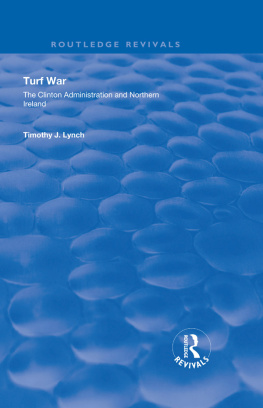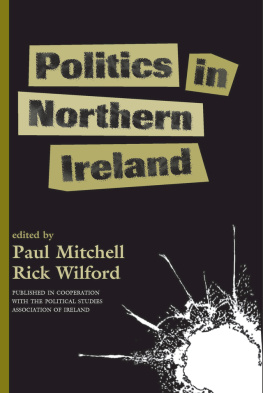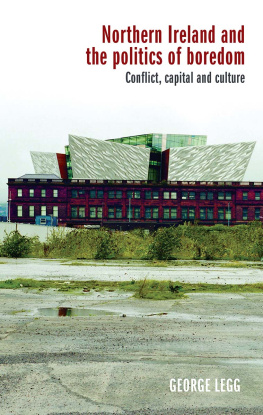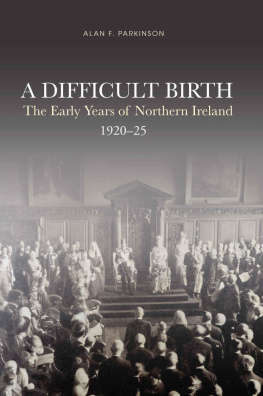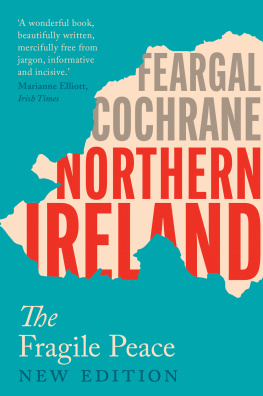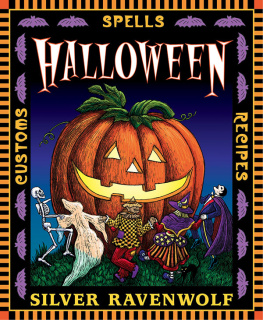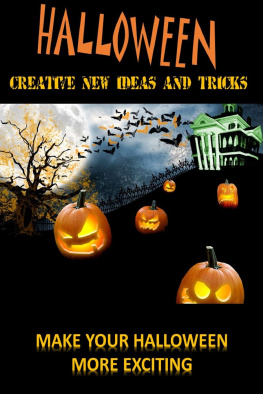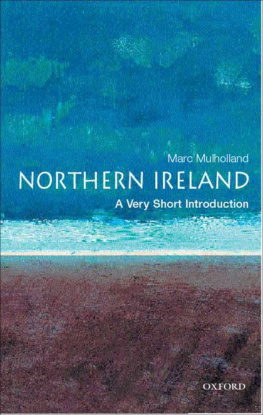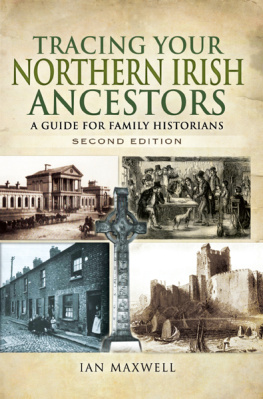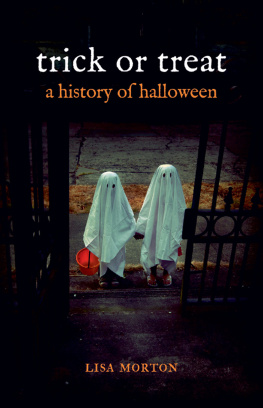Irish Literature, History, and Culture
Jonathan Allison, General Editor
Advisory Board
George Bornstein, University of Michigan
Elizabeth Butler Cullingford, University of Texas
James S. Donnelly, Jr., University of Wisconsin
Marianne Elliott, University of Liverpool
Roy Foster, Hertford College, Oxford
David Lloyd, University of California, Berkeley
Weldon Thornton, University of North Carolina
The Hallowed Eve
| Dimensions of Culture
in a Calendar Festival in
Northern Ireland |
Jack Santino
Publication of this volume was made possible in part
by a grant from the National Endowment for the Humanities.
Copyright 1998 by The University Press of Kentucky
Paperback edition 2009
The University Press of Kentucky
Scholarly publisher for the Commonwealth,
serving Bellarmine University, Berea College, Centre
College of Kentucky, Eastern Kentucky University,
The Filson Historical Society, Georgetown College,
Kentucky Historical Society, Kentucky State University,
Morehead State University, Murray State University,
Northern Kentucky University, Transylvania University,
University of Kentucky, University of Louisville,
and Western Kentucky University.
All rights reserved.
Editorial and Sales Offices: The University Press of Kentucky
663 South Limestone Street, Lexington, Kentucky 40508-4008
www.kentuckypress.com
The Library of Congress has cataloged the hardcover edition as follows:
Santino, Jack.
The hallowed eve: dimensions of culture in a calendar festival in Northern Ireland / Jack Santino.
p. cm.
Includes bibliographical references (p.) and index.
ISBN-10: 0-8131-2081-0 (cloth: alk. paper)
1. HalloweenNorthern IrelandHistory. 2. FolkloreNorthern Ireland. 3. Northern IrelandSocial life and customs. I. Title.
GT4965.S25 1998
394.2646'09416dc21 98-36767
ISBN 13: 978-0-8131-9245-1 (pbk.: alk. paper)
This book is printed on acid-free recycled paper meeting the requirements of the American National Standard for Permanence in Paper for Printed Library Materials.
Manufactured in the United States of America.
| Member of the Association of
American University Presses |
Contents
Illustrations
(Unless otherwise noted, photographs by Jack Santino)
Preface
The research for this book began, if one can mark a beginning to such research, with a ten-day folklorists tour of Northern Ireland sponsored by the British Council. Dr. David Taylor of the American Folklife Center was responsible for suggesting candidates to the British Council; Marsha Maguire in turn suggested me. My great thanks to both of these friends and colleagues; they set me on a road I am still traveling.
It was my intention upon embarking on the folklorists tour to establish an institutional relationship in Ireland through which I could return for lengthier research. I knew I wanted to study Halloween. I was welcomed and encouraged by the staff of the Ulster Folk and Transport Museum (UFTM). Under its auspices, I applied for and received both a Fulbright Research Award and a British Council Research Attachment to the museum. At the British Council I would like to thank Peter Lyner in Belfast and Carmel McGill in Washington, D.C. Dr. R.A. Gailey, then director of the UFTM, approved my applications and saw to it that my scholarly needs were accommodated. He also shared with me his vast expertise on mumming traditions, bonfires, and Halloween generally, and I hope his wisdom is reflected in the pages of this book. My immediate liaison at the UFTM was Dr. Philip Robinson, keeper of material culture at the museum. Philip has become a close friend, and I consider him in many ways a coauthor of this volume. He was always willing to share his insights, indulge my inquiries, provide me with research, and he even consented to be interviewed for this project. Moreover, he helped me and my family find a nice home in Bangor and set up our children in school. His help was indispensable for this foreigner, and his learning is crucial to my own.
Like Philip, folklorist Linda Ballard helped me directly. She has provided both data and insights that I have incorporated into my research. She has been a great friend and a great colleague, and I am in her debt. Michael McCaughan and I have collaborated on other projects, and my research interests in Northern Ireland have both benefited and broadened as a direct result of his friendship and collegiality. Anthropologist Anthony D. Buckley shares with me an interest in popular religion and ceremony more generally. In fact, he commissioned me to gather popular and mass-produced Halloween items for the museums collection. I have had many fruitful discussions with Tony and, once again, I have worked with him on another project. The late Ronnie Adams opened up the library to me and extended full staff privileges. His death is a major loss; his kindness will not be forgotten.
I took up residency at the UFTM from August 1991 through June 1992, where I was generously allowed access to all their services: typing, fax machine, duplication, and so on. I extend my sincere thanks to every member of the staff. They were helpful and extended themselves for me and my work. I owe my gratitude to everyone at the Ulster Folk and Transport Museum. I cannot mention everyone by name, but I hope they all realize how sincere my thanks are.
Likewise, I cannot begin to name the individuals who taught me about Hallow Eve in Ulster. My thanks extend to all those people mentioned by name in this book and also to the uncountable many with whom I spoke on a daily basis: in my living room, in their kitchens, in queue at the bake shop, at the schools. Thanks to you all. I do have to single out our next-door neighbors, Ethel and Ray Brewster, their granddaughter, Jemma, and Mrs. Davidson, who volunteered to be our unofficial nanny. Mr. Brewster took it upon himself to teach me to drive; Mrs. Davidson babysat without being asked and regularly provided us with the best apple tarts in all of Ireland.
We loved Northern Ireland. There is violence there, of course, but it is far less random or widespread than that which I have experienced in the United States. Moreover, the people of Ulster have not lost their capacity for outrage at outrageous acts. My son Ian attended first grade at Bangor Central Primary school, where he was fortunate to be a pupil of the late Mrs. Heather Armstrong. Mrs. Armstrong was one of the most impressive women and best teachers I have ever met, and she loved Ian. My other son, Will Kiley, was only two years old. He attended preschool at St. Columcilles, also in Bangor. He too had a wonderful experience there. My daughter, Hannah, took her first steps at our home at 3 5 Newtownards Road in Bangor. Today, at the age of six, she is an accomplished Irish step dancer. My wife, Lucy, joined many different church-sponsored Mums and Tots groups, through which I made many important discoveries about my research projects. She also initiated her own research on traditional dance and traditional foodways in Ulster. My family was heroically patient with me as well as supportive. They provided me with some of the best experiences I have had in my life, in the extraordinary place known as Northern Ireland.


